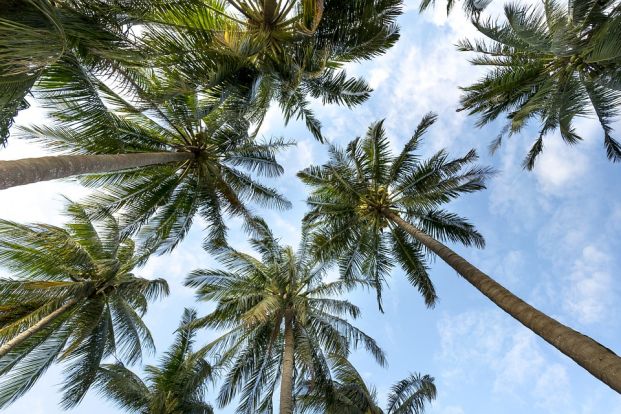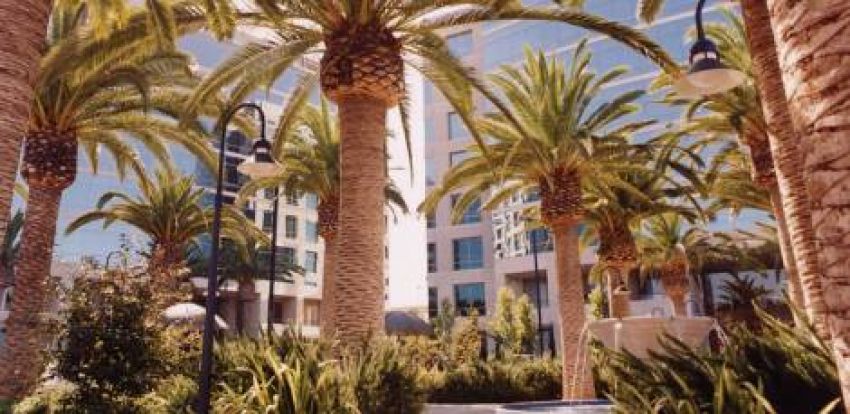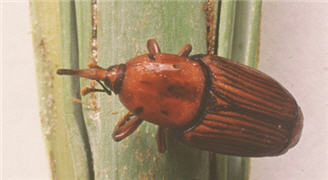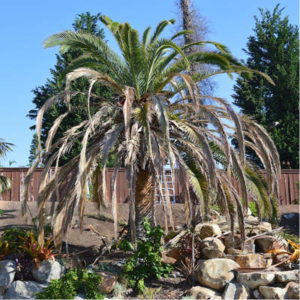Palm Trees – Regular Maintenance is Crucial
Palm trees are an essential part of the California atmosphere, inspiring daydreams of fun in the sun. Maintaining the good looks of palm trees on your commercial property, however, is anything but a leisurely endeavor. Though routine maintenance is essential for picture-perfect palms, palm tree care is complicated.
Most Palm Tree Species are Not Native to the Area
Despite the many varieties of palm trees in California, only the California fan palm – also known as the desert palm or Washingtonia filifera – is native. All other species are imported. Other non-native species, such as the date palm introduced by Spanish missionaries in the 18th century and other species brought here for palm gardens created by Europeans in the mid 19th century, are non-native, imported into the region as immigrants arrived in the US.
Each Palm Tree Type is Suited to a Certain Climate
There are over 2,500 palm species worldwide. Only 11 are native to North America. They thrive in a range of climates from deserts to rain forests, each requiring specific growing conditions. Imported species, such as Mexican fan palms and Canary Island date palms, often lack essential nutrients common in their native growing environments. These deficiencies make the trees more prone to stress and disease. Even Native California fan palms present unique maintenance challenges in the current California climate. Fan palms need a great deal of water in the soil to thrive, which currently drought-prone regions across the state struggle to provide.
As many native fan palms, planted during regional beautification efforts in the 1930s, reach the end of their 75 to 100-year lifespan, some local governments are no longer replacing the trees. This is partly due to climate-related water shortages, and also to the threat of pests such as the red palm weevil, which are making it difficult for palms to survive. For these reasons, there is a movement toward the re-introduction of native, drought-resistant plants and trees.
Palm Trees Present Many Maintenance Challenges
It may be tempting to tackle routine maintenance tasks yourself, until you consider the height of your trees. Palm tree maintenance is not for the faint of heart, including inexperienced property owners and uninsured lawn care services. Proper care requires a thorough knowledge of arboriculture and safety practices. With help from a trained arborist, you can avoid tree care injuries, alongside issues associated with improper pruning, such as:
- Over-trimming that can weaken palms, making them more prone to storm damage
- Improper landscaping around palms that can result in mechanical root damage from trimmers
- Paving or using rocks around palms, which increases temperatures, burning roots, and reducing water/nutrient absorption
- Delayed maintenance that increases fire risk and the risk of injury and damage from falling fronds and trunks
- Suffocation by palm fronds due to improper pruning technique (pruning from below) and septic arthritis from palm tree thorn injuries
- Excess germination of nuisance palm saplings on your commercial property
Prune your palms properly and safely with help from the Arborwell team. Contact us at to request an estimate for regular palm tree maintenance for your Hayward, San Jose, San Francisco, Oakland, Livermore, Palo Alto, or Walnut Creek property today.



